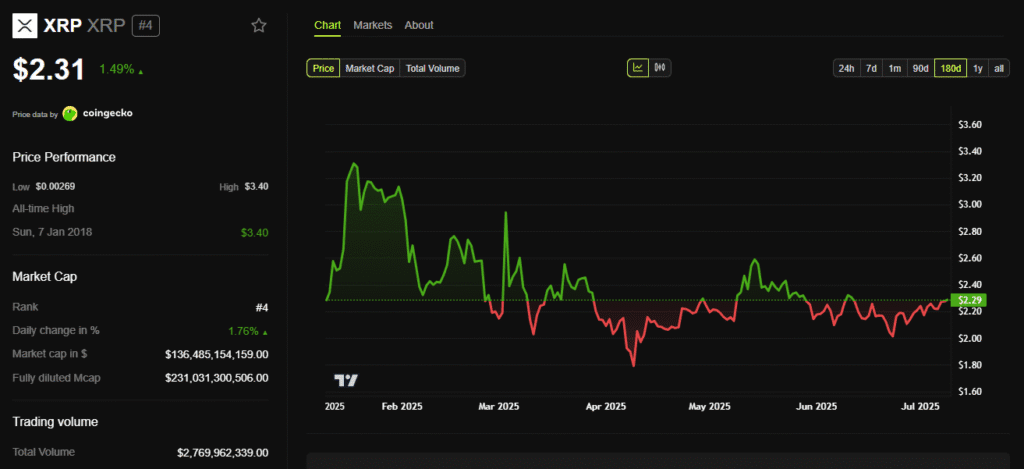XRP has not erupted since the November 2024 rally. Analyst Jose Luis Cava thinks the answer is a word – control.
In a recent video, Cava claimed that despite the strong technical foundation of tokens, one dominant “hand” continues to influence XRP’s market behavior. He noted limited supply, centralized token management, and weak institutional demand as a major obstacle.
Ripple grip against XRP power sources
Unlike Bitcoin and Ethereum, XRP was pre-mined. At the time of release, 100 billion tokens were created. It will not be cast again. Ripple Labs initially owned 80% of its total supply, and as of mid-2025 it still controls around 42%.
Approximately 35% of this is locked into your monthly escrow account, while 7% remains in your Ripple wallet.
Each month, Ripple releases up to 1 billion XRP, which has a major impact on circular supply and thus price dynamics.
This level of control has encouraged the debate about whether XRP is truly called a distributed asset. Market movements no longer reflect organic supply and demand, Kaba warned.
“Only one hand can perfectly determine the direction of XRP’s price, but I don’t like it,” he said. “I speak not as a technical analyst, but as a market participant.”
Institutional requirements remain elusive
XRP is designed for fast, low-cost cross-border payments, a clear utility for banks and institutions, but it does not see the institutional traction that has benefited Bitcoin and Ethereum.
The adoption remains thin. Market uncertainty regarding Ripple’s central bank transactions, as well as sparse public information regarding live integration, has created doubts. This hesitation may discourage larger investors.
“Look at the XRP chart. It jumped up in November 2024 and moved sideways. That’s not a healthy trend,” Cava pointed out, comparing it to Bitcoin’s clear upward momentum.
Transparency Issues: Private vs Public Ledger
Another concern is the dual leisure architecture of XRP. Public XRP Ledger handles retail and open transactions.
However, Ripple reportedly developed an independent ledger specifically permitted for central banks exploring CBDCs.
Although similar technologies are used in public XRP ledgers, this private version is not publicly accessible and operates independently.
This private ledger is not publicly available. Some speculate about the future merger of the two systems, but Ripple has not confirmed such plans. For many investors, this opacity is a red flag.
In a crypto market where transparency and decentralization are essential for trust, XRP’s closed architecture stands out.
XRP prices get stuck until structure shifts
Technically, XRP continues to function as designed. However, structurally, it faces challenges. High token concentrations, widespread lack of demand, and limited network transparency limit the upward potential.
Unless Ripple decentralizes the distribution of tokens and opens civilian operations, or new adoption waves do not appear, XRP could remain trapped in a sideways trend.
As Cava highlighted, price momentum cannot return without wider demand and changing governance dynamics.
Post XRP prices remain stuck? Analyst Point Centralized Control was first introduced in Beincrypto.
